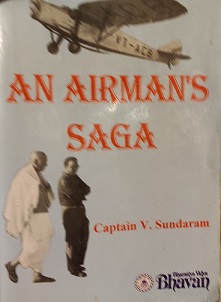

The Book ‘ Deng Xiapong & the Transformation of China’ is written by Ezra Vogel, who is a Professor at Havard University.
The Book traces the career of Deng Xiaoping as he started off as a young communist to the Paramount Leader of China.
The China we know now – rich, powerful, confident- is because of Deng Xiaoping-his guts, his vision and above all, his indomitable will.
The Book traces out the ups & downs of Deng’s career in the brutal politics of Mao’s China. The political skills required to survive and thrive in such a regime is just incredible.
When Deng took power, China was in a terrible shape.Millions had died due to famine etc and the country was desperately poor.
Deng set out and implemented the four modernizations comprising industry, agriculture, national defence and science & technology.
Deng was a true patriot and was focussed on reforms that will make China rich and powerful.He would brook no opposition in his way.Once the Party gave the order, all branches of the Govt including judiciary acted on it.
Deng was also extra-ordinarily wise. He knew that without technology China couldn’t prosper.So he repaired relations with Japan, Europe and the United States so that Chinese could learn from them.He invited them to invest in China and sent Chinese students there.
I was astounded to know that since 1980s, the Chinese Communist Govt had sent millions of students to study in the US.Unlike the Soviet Union which was afraid of people defecting, Deng didn’t care if people didn’t come back.He felt Chinese people would be an asset to China even outside China
Deng was intensely focussed on quadrupling China’s GDP. He used to remark that this was not a economic issue, but a political one. He knew that without economic growth, the people of China would throw the Communist Party out.
Deng is also known as the person who orchestrated the Tianneman massacre.The Book describes the events/incidents leading up to the massacre in great detail. The bottom line was that in the end it was the people of Beijing Vs Deng Xiaoping. Deng won.
India is mentioned in the Book only with reference to the 1962 war. Amongst Chinese policy makers, the 1962 war a textbook example of how a sucessful war should be fought by China-short, sharp and decisive.
Deng cited the example of the 1962 war when he invaded Vietnam in 1979.He wanted to teach Vietnam a lesson and the way he did it was by instigating border conflicts (sounds familiar?) .There were thousands of border conflicts on the China-Vietnam border which culminated in the invasion of Vietnam.
The Book also highlights the keen sensitivity of the Chinese Govt to Taiwan & Hong Kong.
Deng was fairly clear that UK would have to hand over Hong Kong to China. It was non-negotiable and the Chinese were prepared to go to war with UK if HK was not handed over peacefully to it.
Regarding Taiwan,it was an article of faith for Deng to reunify it with the mainland.It was one of his key goals but he was not able to do it owing to the determination of the Taiwanese people & US arms and support to Taiwan.
Deng’s following comment regarding Taiwan shows clearly the long term, ruthless and impacable nature of the Chinese Govt : ” If the problem cannot be solved peacefully, then it will be solved by force.This would do neither side any good.Reunification of the country is the aspiration of the whole nation.If it cannot be reunified in one hundred years, then it will be reunified in one thousand years.”
The Book is a very scholarly book , painstakingly researched and plainly written.As such, it can be a difficult read at times.
I would recommend this book only to serious history buffs interested in China.




